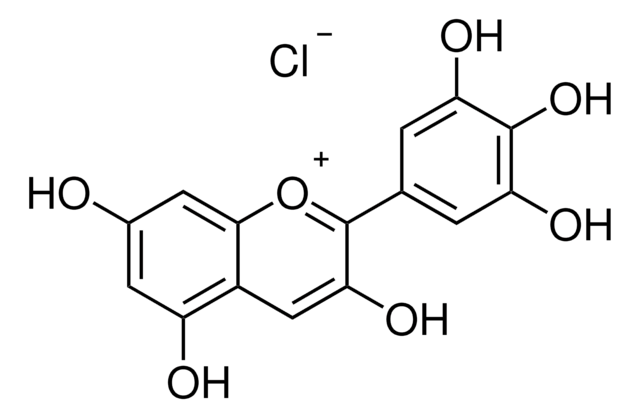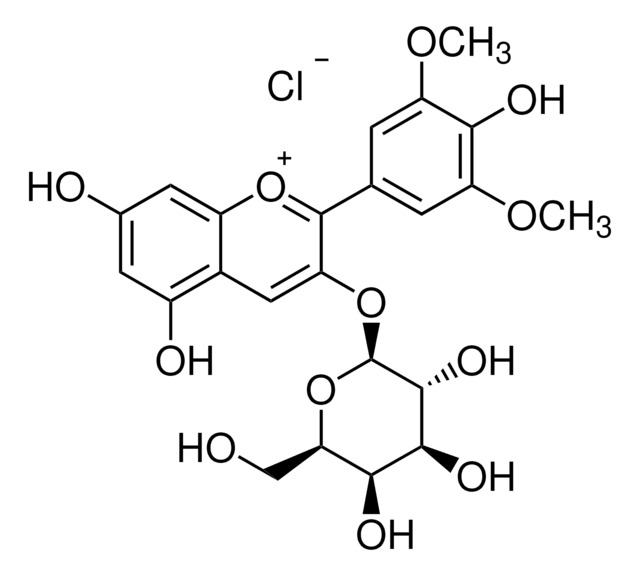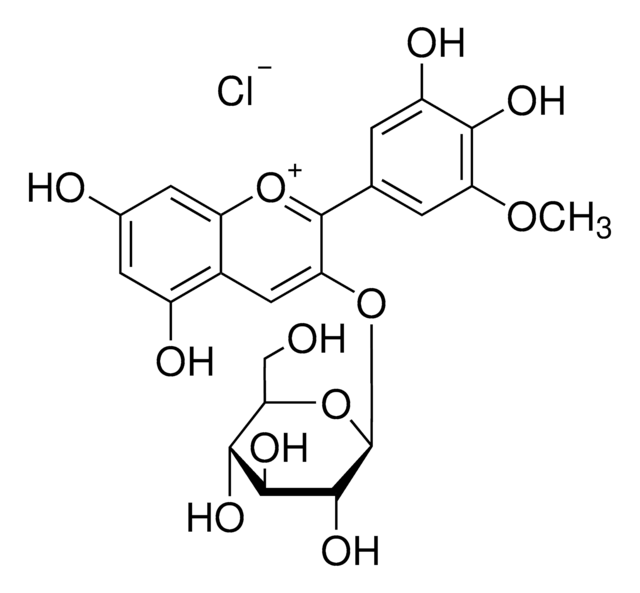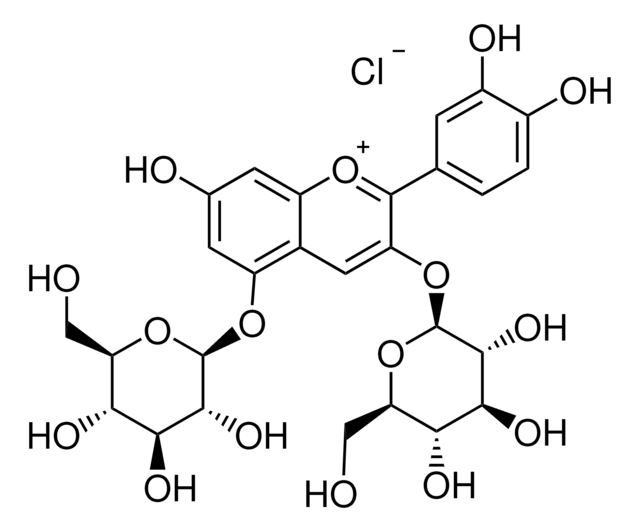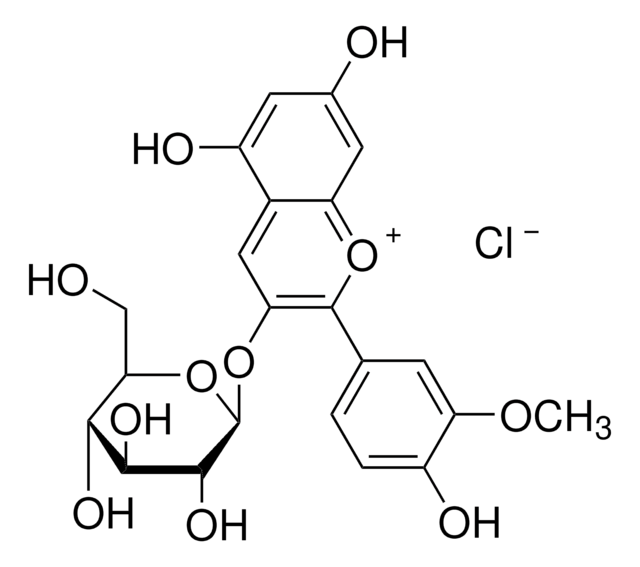68120
Malvidin chloride
≥95.0% (HPLC)
Synonyme(s) :
3,4′,5,7-Tetrahydroxy-3′,5′-dimethoxyflavylium chloride, Malvidin, Oenidin chloride, Primulidin chloride, Syringidin chloride
About This Item
Produits recommandés
Pureté
≥95.0% (HPLC)
Application(s)
metabolomics
vitamins, nutraceuticals, and natural products
Chaîne SMILES
[Cl-].COc1cc(cc(OC)c1O)-c2[o+]c3cc(O)cc(O)c3cc2O
InChI
1S/C17H14O7.ClH/c1-22-14-3-8(4-15(23-2)16(14)21)17-12(20)7-10-11(19)5-9(18)6-13(10)24-17;/h3-7H,1-2H3,(H3-,18,19,20,21);1H
Clé InChI
KQIKOUUKQBTQBE-UHFFFAOYSA-N
Vous recherchez des produits similaires ? Visite Guide de comparaison des produits
Catégories apparentées
Description générale
Application
Actions biochimiques/physiologiques
Conditionnement
Code de la classe de stockage
11 - Combustible Solids
Classe de danger pour l'eau (WGK)
WGK 3
Point d'éclair (°F)
Not applicable
Point d'éclair (°C)
Not applicable
Équipement de protection individuelle
Eyeshields, Gloves, type N95 (US)
Certificats d'analyse (COA)
Recherchez un Certificats d'analyse (COA) en saisissant le numéro de lot du produit. Les numéros de lot figurent sur l'étiquette du produit après les mots "Lot" ou "Batch".
Déjà en possession de ce produit ?
Retrouvez la documentation relative aux produits que vous avez récemment achetés dans la Bibliothèque de documents.
Les clients ont également consulté
Articles
Antioxidants protect biological systems from oxidative damage produced by oxygen-containing free radicals and from redoxactive transition metal ions such as iron, copper, and cadmium.
Notre équipe de scientifiques dispose d'une expérience dans tous les secteurs de la recherche, notamment en sciences de la vie, science des matériaux, synthèse chimique, chromatographie, analyse et dans de nombreux autres domaines..
Contacter notre Service technique
